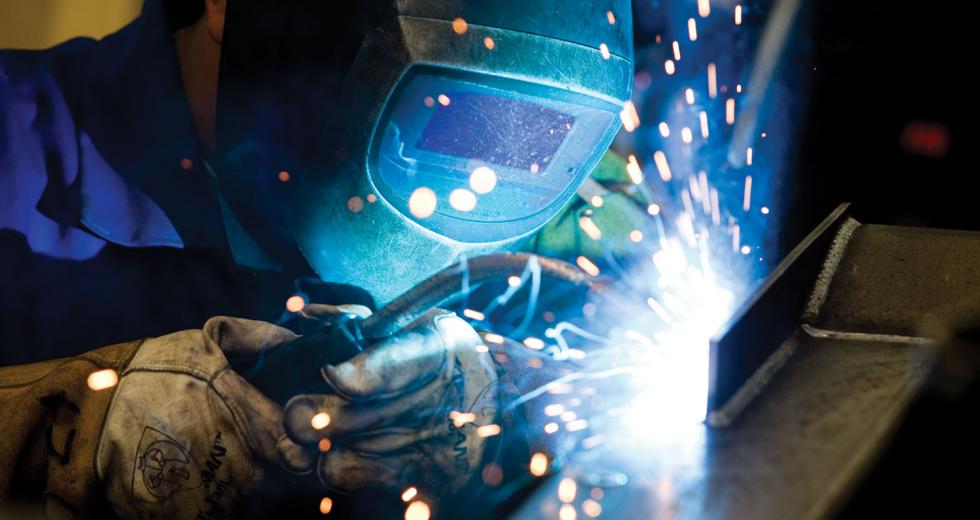On paper it looks like the Capital Region has the makings of a world-class clean-tech hub: access to policy makers at the Capitol, access to innovative research churning out of UC Davis, and housing that’s affordable for green-collar workers. What this equation doesn’t account for, however, is how fast California is losing its competitive edge to other states and the global economy.
In addition, the tech sector as a whole is showing signs of slowing nationwide. The U.S. high-tech industry shed 115,000 jobs between January and June of 2009, a 1.9 percent decline, according to a recent report by TechAmerica Foundation, a Washington-based trade group. So how do you grow an industry locally when it’s stagnant nationwide and the rest of the world is trying to lure your current business away?
The answer, local economic developers say, is to get creative.
Once a company begins to look for a place to land in the region, local jurisdictions jockey for advantage with a variety of incentive packages. Many rely largely on the work of the Sacramento Area Commerce and Trade Organization to market the region, while others position themselves as the experts on state and federal tax credits, ready to help businesses navigate the paperwork. Or they develop their own incentive programs: utility tax rebates, fee waivers and gap financing for fledgling firms.
It appears to be working. Clean tech has grown from 29 companies in 2005 to more than 100 in the Sacramento region, ranging from European multinationals to local startups. The Sacramento Area Regional Technology Alliance estimates these firms have created between 2,500 and 3,000 new jobs.
The extent incentive programs play is harder to measure.
Area boosters and clean-tech executives are quick to say that incentives are not the primary driver for businesses to relocate or expand. But having made that decision, many look to take advantage of the variety of tax credits available from the state by locating in one of the region’s enterprise zones or at McClellan Business Park, a former military base.
The past two years, of some 18 relocations or expansions tracked by SACTO, more than half of them by green companies, seven located either in one of the enterprise zones or in the McClellan Air Force Base recovery area.
These incentives aren’t limited to clean-tech firms, and the state doesn’t track sectors, making it hard to say how many jobs come from the state’s foregone tax revenue, estimated at $333 million back in 2005.
A recent study by the Public Policy Institute of California found that “enterprise zones have no statistically significant effect on either employment levels or employment growth.” It also found some evidence the zones discourage small businesses, perhaps because large firms are in a better position to take advantage of tax credits.
The findings hinted that communities that did more marketing and outreach saw a slightly better return on their enterprise zones and suggested jurisdictions hoping to drive job growth create their own incentive programs.
Because the state incentives are fairly uniform, it can be hard for individual jurisdictions to stand out. That’s where creativity comes into play.
Some, like Fairfield, pitch themselves as experts in navigating the available incentives, including industrial development bonds, which give eligible firms access to tax-free, low-interest financing. When Anheuser-Busch Co. built a factory in Fairfield, the city supported the company’s bid for $15 million in tax-free bonds to generate power onsite by reusing methane gas.
Other local jurisdictions are developing their own incentive programs that don’t necessarily take the traditional form of tax rebates and credits.
Roseville controls its own electric, sewer and water utilities, putting it in a position to work with companies on their energy and water needs and allowing the city’s policy makers to keep rates low. The electric utility also serves as a beta-testing site for new clean-energy technologies, and the city provides rebates of up to $60,000 toward tenant improvements.
Roseville Deputy City Manager Julia Burrows, who heads economic development efforts, says she doesn’t know how many green jobs these incentives have created, but she’s confident they’ve been worth it.
“There is a lot of competition now,” she says. “Everyone wants to be the new green hub. The cost of inaction is much greater than the cost of fostering these green-tech companies.”
Sacramento County also has developed its own incentive programs. It has plenty of warehouse and manufacturing space that’s well suited for clean technology, including McClellan Business Park.
The county’s Department of Economic Development works with park management to offer reduced rents. And because the park is part of a base recovery area, property taxes can be rolled back into tenant improvements.
“Everyone wants to be the new green hub. The cost of inaction is much greater than the cost of fostering these green-tech companies.”
Julia Burrows, deputy city manager, Roseville
The county also developed a utility tax rebate during its negotiations with OptiSolar Inc. to land its solar panel plant at McClellan. The rebate is based on companies reaching investment and job creation benchmarks. There is no cap on the rebate, but companies have to perform.
“We were looking to be competitive without taking on too much risk,” says Rob Leonard, director of economic development for the county.
The story of OptiSolar points to the rewards of reaching out to clean-tech companies but also highlights the risks. The deal was greeted with fanfare when it was announced, but the manufacturing facility is currently quiet. The company, unable to get financing, didn’t get off the ground. Leonard says he has no regrets. The company never hit its benchmarks, so the county never paid out money. The company was sold to EPOD Solar Inc. earlier this year and still plans to produce solar panels at the site.
The county now has the utility tax rebate program in place to attract future companies, and it has its sights set on Europe. The county is in talks with established European and Asian clean-tech companies looking for a U.S. base. This isn’t uncommon. SACTO has focused much of its recruiting efforts on Europe, especially Germany.
“Those countries have embraced the green lifestyle and clean technology with the government underwriting a lot of the development,” says Barbara Hayes, executive director of SACTO. “These companies are established. They’re strong. They’re players.”
Siemens AG of Germany has built light-rail cars here for decades as Siemens Transportation Systems Inc. and recently completed a major expansion in an enterprise zone that could add several hundred jobs. Belgium-based solar and wind company Enfinity opened offices in Sacramento last year to pursue clean-energy projects in the region.
Hayes says the key factors are access to lawmakers in Sacramento and the research opportunities out of UC Davis. The state mandate that utilities produce 20 percent of their energy from renewable sources by 2010 also drives demand.
“When you take all that and put it together with the available land and buildings, [and] affordable housing, it’s a very attractive package,” she says. “Most of the successes have been because of one of those reasons.”
Hayes downplays the significance of incentives, but those who aren’t offering their own are reconsidering. Maurice Cheney, a spokesman for the city of Sacramento Economic Development Department, says the city may well follow the county’s lead and offer a utility tax rebate.
So far, the city has relied on its enterprise zones and the marketing by SACTO. “The county has had success with that, and we need to stay competitive,” he says.
While SACTO goes after established companies, another local group, SARTA, provides assistance to local startups. Much of that assistance is in the form of training and networking opportunities. CEO J.D. Stack says the biggest challenge facing these firms is capital in a tight credit market, and it’s not a problem tax credits can solve.
Fairfield actually offers gap financing to some firms. The city currently has more than 25 loans out, ranging from $50,000 to $200,000, to small businesses. But Stack says he sees a bigger role for government to play in getting firms off the ground.
Much of the federal stimulus package dedicated to the clean-energy sector has gone to training workers for the new green economy. Stack says training workers is important but not everything. If companies don’t get the financing to get beyond three or four people in an office with a great idea, there won’t be jobs for all those green-collar workers.
“There’s not a commensurate amount of money going to help companies grow and create jobs,” he says.
SARTA is hoping to fill at least a portion of that gap. The organization received $250,000 in federal grant funding to start a clean-tech incubator that would offer below-market rents and other support to green businesses.
Help from the private sector might be on the way as well. Globally, venture investments in clean tech rebounded in the second quarter after two quarters of decline. The second quarter saw more than 90 companies funded totaling $1.2 billion in China, India, North America and Europe after two quarters of decline. These companies were led by electric vehicles and biofuels with solar investment hitting a new low at $114 million.
Locally, Stack says the area has come a long way in developing resources for the clean-tech sector the past five years, but now it’s at least competing with the rest of the nation.
The federal stimulus bill included $6 billion in loan guarantees to help developers of wind and solar power plants get financing, but that money isn’t limited to California.
“There’s huge competition, but we continue to have some primary drivers here,” Stack says. “We’ve built some traction and attention from outside the state, and we need to keep building that.”
No taxation without incentivization
Although many of these don’t say they target clean-tech companies in the fine print, California offers several incentives to lure manufacturing companies to the state and expand the ones already here.
Local Agency Military Base Recovery Area: A designation administered by the state Department of Housing and Community Development, these areas can be found at both McClellan Business Park and Mather Field. Also known as LAMBRA, it offers similar incentives to enterprise zones but with additional benefits, such as increased equipment purchase eligibility.
Research and development tax credit: The state allows a company to receive a 15 percent credit against its tax liability for in-house research and development and a 24 percent credit for contract research, which is the highest in the nation. To qualify, companies must conduct the research in the state.
New hire tax credit: A temporary incentive, this credit is for small businesses that create jobs in the next two years. Employers that began the year with 20 or fewer employees could claim a $3,000 credit for each full-time employee hired. This incentive ends after $400 million in credits have been allocated.
Enterprise Zone Program: Used in places like Stockton and West Sacramento, this program is administered by the state Department of Housing and Community Development. There are a handful of these zones in the Capital Region, and businesses relocating to one can take advantage of tax credits and other financial incentives.
• Companies can earn tax credits for equipment and machinery used to manufacture or assemble products, produce renewable energy or control air and water pollution. These rules have been expanded to include some office items, such as computers and copy machines.
• Companies can also receive partial credit for wages paid to certain employees. The credit is used over a five-year period at a maximum of $37,440 for an employee who stays with the company for the entire five years.
• Other benefits include a 15-year carry-over of net operating losses, expensing some depreciable property and deducting interest paid on loans.
For a complete list of tax breaks and assistance, visit labor.ca.gov/calbis.
- Erica Meltzer
Recommended For You

On the Hunt
Searching for economic prosperity in untapped talents
Sacramento loves regional planning. Take an issue — say, transportation or land use or coordination of local government — and a group will sprout to chart a course.

Genetically Engineered Industry
The Capital Region holds promise for agricultural technology
A few months after the 2002 launch of Arcadia Biosciences Inc. in Phoenix, CEO Eric Rey insisted the company move to California. Not to Silicon Valley, but to Davis.



